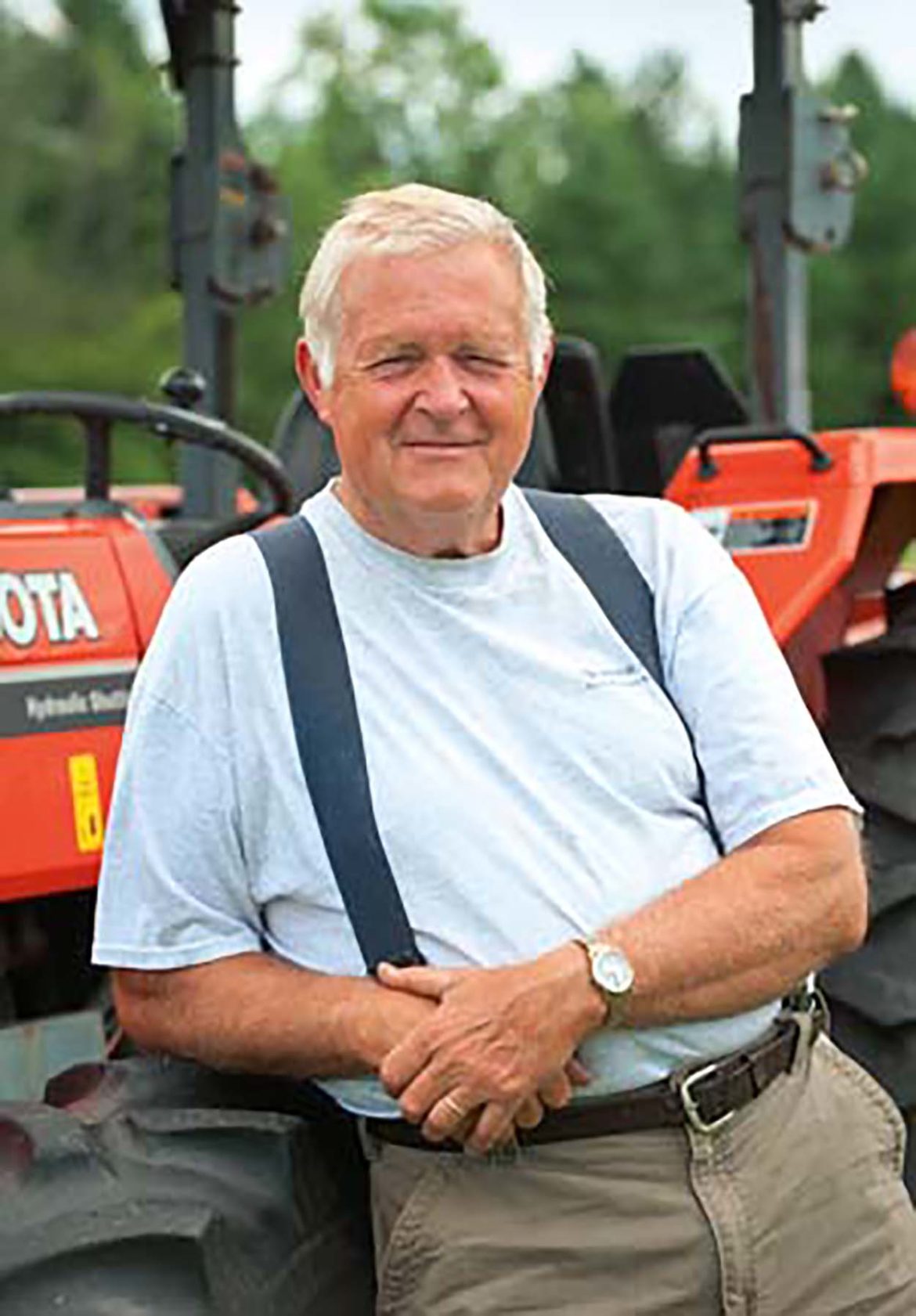By BEVERLY STODDART, A NH Writer’s Life
Steve Taylor of Plainfield is far more than what the title of his book declares. The book title is Stephen Howard Taylor: Recollections of a life in newspapering, farming & public service. He is an energetic individual, one who I would describe as a man with true New Hampshire spirit. He’s wise, thoughtful, gentle in his ways, and smart. Smart because, as he writes in his memoir, “I did this [book] at the urging of my sons and several friends who believed a printed account of my life was worth creating.” They were all so very right.
Editor’s note: Steve wrote the book for family and friends. If you want to buy a copy, you might have to ask him to print more copies at stevetaylornh@gmail.com. I know I would buy a couple for Christmas gifts. Great book.

Some of the many items of Steve’s life include serving as the New Hampshire Commissioner of Agriculture for twenty-five years, as well as thirty-one years as Plainfield’s town and school district moderator; being the subject of a Charles Kuralt “On the Road” segment with a hand-mowing competition that appeared on the CBS evening news with Walter Kronkite; seeing presidents first-hand including Jimmy Carter, George H.W. Bush, Barack Obama, and Joe Biden; and, was the founding executive director of the New Hampshire Humanities Council where he continues to participate as a Humanities to Go presenter. His talks include the impact of cows and sheep on New Hampshire’s economy and landscape and “histories of grange halls, one-room schoolhouses, agricultural fairs, poor houses, and roads.” Steve currently serves on the board of directors for the New Hampshire Center for Public Interest Journalism which publishes the nonprofit online independent news site, InDepthNH.org.
He is a plain-spoken person, and I hope you will hear his voice in this article. As an interviewer, I try to stay out of the way of the person being interviewed. He speaks about his life as a farmer, a newspaperman, and a family man. After our interview, he chauffeured me around the farm in his golf cart, and we visited the cows that are boarded there and looked at the fields where the hay grows.
Like the title of his book, my interview is broken down into segments. These are glimpses of what Steve has seen. This is a book that those who love New Hampshire will enjoy and learn more about. We started with his time in the army.
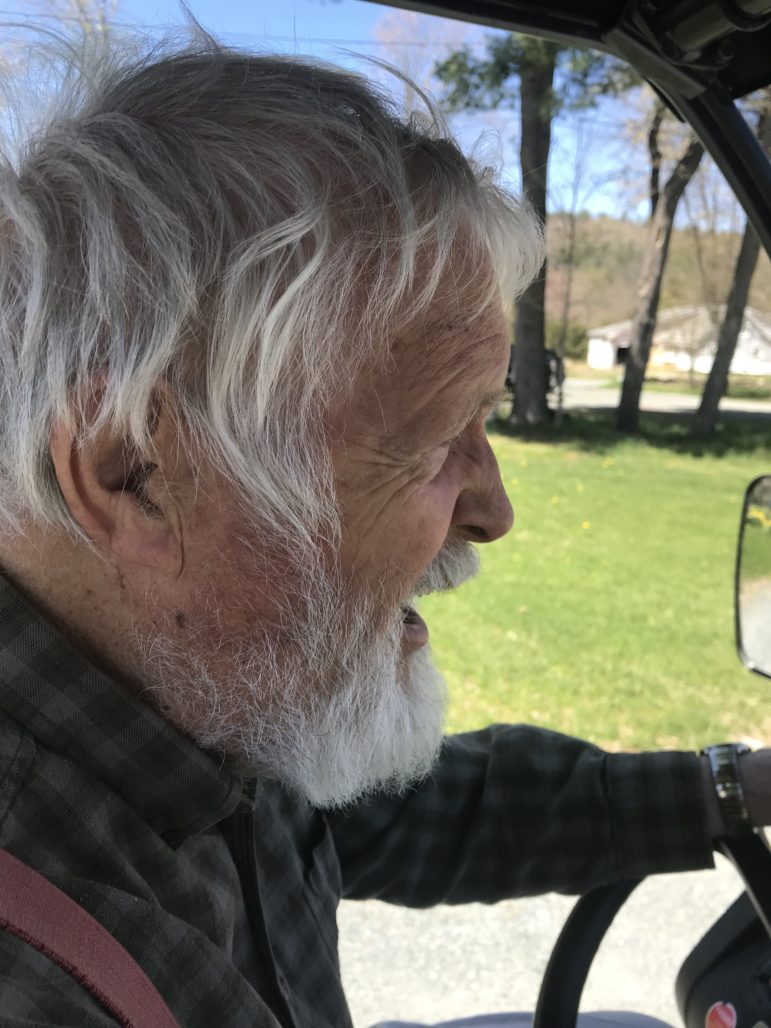
SOLDIER: Steve’s “stint in Uncle Sam’s army.”
When did you go into the army?
I went into the army after UNH.
Would you talk about the infamous Brigade 2506?
At Fort Jackson, I was posted there for advanced individual training. Brigade 2506 was a bunch of Cuban expatriates who said we want to go back and invade our homeland. The American foreign policy establishment, the Pentagon, said okay. We’ll form a brigade of you guys and invade at the Bay of Pigs. It was a disaster. The remnants were brought back, and they said the problem was they weren’t adequately trained. We’ll train them again, and they’ll be better equipped and try to invade Cuba. A stupid foreign policy fiasco. These guys were brought to Fort Jackson and had to have a Spanish-speaking cadre. They were brought in, and they took over one whole regiment. These guys were misfits. They were probably half criminals. They were almost untrainable. While I was there, all the big shots from Washington were coming down to inspect and try to figure out why is this thing totally screwed up. It was a window on bad misjudgment.
These were the leftovers of the guys who went to the Bay of Pigs. So, they get back and say, let’s try it again.
Soon after I left Fort Jackson, the whole thing was abandoned.
You were a battalion vector controller. You describe that in the book.
I enlisted in a Vermont unit in Windsor, Vermont. I went to training and was in that unit for a little while, but I took a job in Portsmouth. So, I transferred to the New Hampshire National Guard and wound up in headquarters Battery Third Howitzer Battalion 197 in Portsmouth. I guess they needed somebody for battalion vector control.
What did you do?
It was supposed to control bugs if there was a bug invasion. I didn’t do anything. After a while, they made me a battalion intelligence NCO. By then, I was a sergeant E5, three chevrons up. I had to have a secret clearance, but I never saw any secret documents or went to any secret briefings.
You were also chief of smoke.
That was after I changed jobs from Portsmouth to Lebanon. That one was another artillery battalion which has five batteries. There’s headquarters. Then the service, which is the truckers. They haul the artillery shells and the food. Then there are three firing batteries. Each has six 155 howitzers which stands for the millimeters of the bore of the weapon.
That’s what they’re shipping to Ukraine. Those are 155s, but the new ones have a much longer tube and much greater range. The ones we had were World War II’s, and their range was about a maximum of seven miles. These they say go forty-something.
The chief of smoke’s job is in the battery with the six howitzers. We’re going to set up in this field, and the chief of smoke assigns the location, so they are all spread out over the field, pointing in the direction based on a compass reading. You need to get each tube parallel to the next one. There is an instrument on each one of the weapons. The chief of smoke is behind with his instrument. Through a complicated process, you get each one, so they’re all parallel. So, when they fire, you want to have all six rounds land like that. You don’t want one over here or over there.
I can’t imagine the noise.
It’s terrible. I almost lost hearing, but I was lucky. One day, I was standing near one moving a piece of wire out of the way, and boom, off it went. It was sort of like a concussion. I lived through it.
REPORTER TO MANAGING EDITOR: “A newspaper guy, always a newspaper guy.”
Your first job was as a sports stringer for the Valley News and Claremont Eagle.
In those days, these two competing daily papers shared resources for high school sports. Each high school would have a stringer who would call in box scores from basketball games or whatever. I got the gig doing that when I was a junior at Hanover High. The guy that was a year ahead of me passed it on to me when he finished up. That started me off. But, going way back when I was a young kid, I loved to read newspapers at age seven or eight. My parents were people who read. My father read the New York Sunday Times. My mother was from Eastern Mass, and there was always a Globe. That was the culture I grew up with.
Instead of college after high school, I got a job at a newspaper in the ad services department. From there, I went into sales. A young person could learn a skill from a newspaper.
Some of the best reporters I ever had never did much in college. I got onto the student paper at UNH. The New Hampshire student paper. It had been around for a long time. It was part of the English Department. It was printed on campus in the campus print shop. When I took it over, the campus print shop kicked us out. I checked if the Portsmouth Herald could do it. Could Foster’s do it? I ended up with a weekly paper in Somersworth called The Somersworth-Berwick Free Press. It enabled us to be a newspaper. I didn’t have much of a staff. But we had a good time, and it was a wonderful experience.
You get this great job in Portsmouth.
I went there as a rookie. I was basically a trainee as far as they were concerned.
But on your second day, the Thresher disaster happens.
That’s right. It was a sub built in Portsmouth. It had been brought in for a tune-up after being at sea for three or four years. They install new technology, probably guidance systems. It was taken out for sea trial. Nuclear subs have two crews. One is the gold crew and the blue crew. One’s out for sixty days, and the other is at shore, and then they swap. I don’t remember if it was a blue or gold, but it’d be about sixty men to run the ship. There were a bunch of civilians, naval shipyard employees, who had been involved in the work on the sub. They go out to participate in the tests to ensure that whatever work they’ve done functions the way it was supposed to be. The sub went out, and the commander took it down. They say the first thing they do when they go out on those is take it down to maximum test depth. Submerge way down. Then they want to see the sub blow. In other words, they take that compressed air and push the water that’s been brought in to ballast it, push it out, so the thing comes back up. The last radio communication from the skipper was exceeded maximum test depth and attempting to blow. Then the sounds of the ship breaking up come over the radio. Then there was silence. That’s how it played out.
Was it the skipper’s fault?
A board of Naval inquiry spent a year and a half getting all kinds of evidence. It was ratcheted up because the thing was a nuclear submarine. The Soviets were lurking around. They wanted to get ahold of it. All that intrigue going on. Those 120 guys on board, navy guys, and civilians were killed.
Did they ever recover part of the ship?
They got photographs. They had a thing for undersea exploration. They send it down on a cable, and it’s got cameras and lights, and they found a piece of wreckage, they thought. I took them at their word. It’s a couple hundred miles out.
On your second day on the job, you get sent out to interview family members.
Here I come in, scrawny farm kid; what the hell we going to do with him? They haven’t got time to train me or introduce me. Ray Brighton was the managing editor. He’s sitting there and clearing copy. He’s on the phone. Everything is going crazy. He says, kid, here’s a list of men on that boat. See if you can talk to families. See what you can do. Get out of here.
First, I grabbed a Portsmouth phone book and matched up some names. From going to UNH and going over to Portsmouth, I knew the layout of the town. There wasn’t any GPS in those days.
No cell phones. No internet. You got the job done.
I came back, sat down, put in some paper [in the manual typewriter], and told the story. I pulled it out, put my pencil down, changed a couple of words, folded it up, and put it in the box on the desk. They called it a rim. It was a horseshoe-shaped desk, and the managing editor and the slot person were in the middle and wrote most of the headlines. Ray Brighton would sit over on the perimeter. He’d take the page layout and decide that story is going here. This story is going here. Then he’d hand it over to the slot person to take the copy, read it down, and put a headline on it. He’d roll it up, put it in one of those pneumatic tubes, and take it out to the shop. Guys, on the linotypes, grab it. There’d be a separate sheet for the headline. This is letterpress, all metal. A guy is setting the headlines. Then the linotype is (he makes a typing sound), and they push that lever down that casts the line. Then you do the next line. Pretty soon, it builds up, and then the compositor comes over, grabs it, puts it in trays, and makes up the pages per the layout that’s come out from the editor. It was a crazy development that I never could have foreseen.
Your story makes page one, above the fold, on the left-hand side. That is the best spot.
(Steve reads his byline.) Steve Taylor, Herald Staff Writer. Holy #*&%!
What is a writer’s newspaper? You mention the phrase in the book
The Valley News was certainly one. In the day, it was code for eccentrics tolerated. You might have the freedom to write in a little bit unconventional way. To depart from the traditional inverted pyramid news story. At the top, who, what, why, when, and where have to be in the first two paragraphs. Then lesser and lesser facts down. At a writer’s newspaper, you give the reporter license to say the first couple of paragraphs might focus on one fact. It was a colorful aspect of the overall story. It’s trending more towards magazine type of writing. You’re assuming your reader is intelligent enough to follow along. Whereas the old style of the sixties was I got to tell them right up front, quick. Throw in details below. With letterpress, to get it all to fit, you want the least important facts at the bottom because your compositors might say it’s not going to fit. So, they can take that last three or four lines out. The compositor has freedom to do that.
Then you write about Valley News and its two strongest suits. One is photography, and one is typography.
Photography, again, is a variant of the writer’s newspaper idea. The photographer that was there was a guy named Larry McDonald. He was trained at the Doscher School of Photography. Every photo, you tried to do it in an artistic way. Okay, the chamber of commerce has elected new officers. The old way was to get those four people, line them up against the wall, and take their picture. That’s called a firing squad photo. But Larry McDonald would go and say, hey, wait a minute. You sit there, and you stand behind him, and here for a prop is a book. And the other two people are kind of like they’re helping. You have more of an informal pose. It’s more humane. Larry would do wonderful what we call scenic photographs. If you lived here, you knew what he was looking at and what he was saying. It might be in the wintertime. He might take a picture of a house with tremendous icicles hanging off it. We might put that on the front page. A mood of everybody’s talking about the weather. Halloween time, instead of a picture of a jack-o’-lantern, you might grab a couple of kids sitting on top of a pile of pumpkins contemplating which one they were going to pick. Those kinds of things. That was a strong suit.
The other one, the typography, was simply the design from the inception of the paper was directed by a nationally recognized graphic designer who was semi-retired but lived over in Woodstock, named Frank Lieberman. It was greatly simplified but clean, the layout of the paper, and the headline style. In its time, it made for a very lovely composition. There used to be a big competition of various size newspapers would compete for their typography, their appearance. The Valley News, one year, won the whole damn thing. They became champion of champions. That was quite an achievement. As time went on, you saw a lot of other papers change their typography. It evolved its style.
Would you talk about the Northeast Airlines crash on Moose Mountain?
Lebanon Airport is right over here, about four miles. At the time, it was served by Northeast Airlines. It had been around since World War II. They used to fly DC3s from Boston, where they were based, and flew up to the country. They were prop planes. They were developed in the 1930s. Over time they evolved to another prop plane that was a turboprop called Fairchild Hiller 227. It had about 35-40 seats. One of the routes was from Boston to Lebanon. It would often land in Lebanon, drop off people, go up to Montpelier, and finish its run. If you want to go to New York, it will fly Lebanon to Keene and then into LaGuardia. In its later years, it flew the Florida route.
In this deal, there was a Friday evening flight, and people got on board in Boston, and it was a little bit behind schedule taking off. It was October, around Halloween time. The instrument landing system at the Lebanon Airport was crude. It wasn’t like it is today. The pilot had to fly by visual as well as by instrument. The approach that evening was the east/west runway, which meant you flew out over Canaan and that country, and you turned and came in your descent over Moose Mountain, a mountain in the eastern part of Hanover. You drop down over Lebanon and come in on the runway right by the Connecticut River. That’s the flight path. In this case, there was some sort of miscalculation. It was just about dusk, and he was about twenty feet too low. It clipped some trees, which upset the balance of the plane, and crashed. Twenty-nine people were killed. Some survived, people in the back survived.
It was a big story. The Valley News, which was an afternoon paper except Saturday, would be a morning paper. We had gotten the Friday paper out, and after a little break, we went back to do the Saturday morning paper during the evening. It was right around supper time, and I was getting ready to go back to work, and my wife got a call. She said you better hurry up because there’s some kind of plane crash. It was a big undertaking. It was way the hell up in the forest, almost in a wilderness. Who was on board? How many people on board? What happened? You want all this stuff. We had a lot of trouble getting reports up there. Cops freaked out and wouldn’t let anybody near it. As a result, the Commissioner of Safety convened some kind of task force, and they came up with the idea of having press passes issued by the New Hampshire Department of Safety. We got a paper out Saturday morning with a big story in those days, and anyone who wanted to know about it bought the paper.
The inquiry went on for months and months. Why did this happen? I had just gotten discharged from the National Guard unit, and they were activated and had to go up and bring down body parts and corpses. They used the National Guard Armory as a morgue. They had these forensic pathologists come in to try and identify the remains. A guy named Jeff McLoughlin was tasked with following the story. There was an insatiable demand for the news about that. Jeff went on later he was with the Globe.
THE FREELANCE WORLD: “No health insurance, no retirement, no paid vacation, and no steady paycheck coming every Friday.”
You talk about how your wife perceives you in the stress of this job, and you quit and become a freelancer. I thought that was the bravest thing you could have done. You had three boys then, and you left a paying job.
A lot of people thought I was nuts. I had been in it intensively for almost a decade. I just felt I wanted to do something different. I had taken it as far as I could go. Let somebody else take a run at it.
The guy who replaced me was named Peter Selkowe. He had been at the Keene Sentinel and took over. It wasn’t long after I left that he got on this big story of a deranged kid in Lebanon who murdered his mother, cut her up into chunks of meat, and threw the remains over the guard rail on a highway going up into Vermont. The warning signs for this guy were all over the place. Peter dug into it, and his reporting put the finger on state officials who should have caught this guy and was going to do something real bad. It was sensational. The woman was my grade school music teacher. Poor woman. Frances Robb.
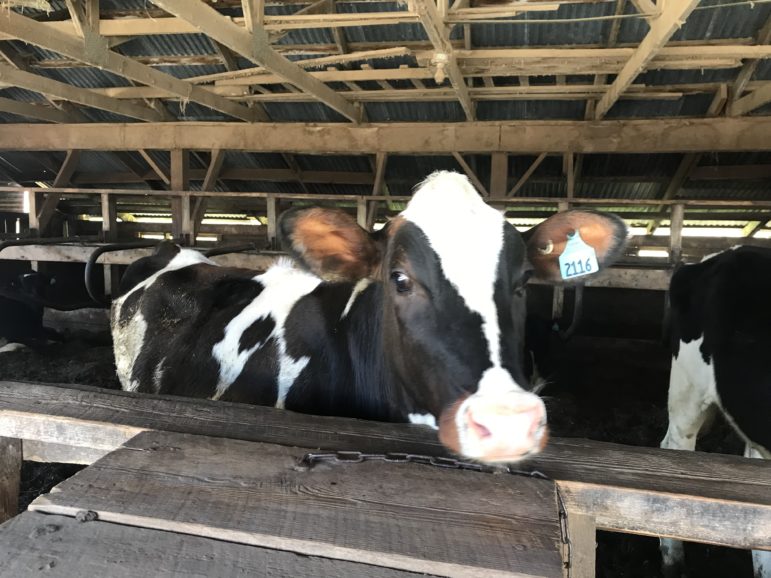
FARMER: “Like a bee to a blossom when it comes to farm stuff.”
You’re a working freelancer and a farmer, and you keep getting jobs. It was as if there was no bump in the road. You had the freedom to pick and choose the stories you wanted to write. Yet, in the book, you write about how farming is akin to a call of the ministry?
It’s something hard to explain to other people. You want to do it. You see somewhere deep in the recesses of your mind something that gives you satisfaction. I had grown up on a little part-time farm, and my father was a schoolteacher who farmed on the side. I loved the idea of having animals and tractors, cutting the hay, and doing those things. I also recognized I was in no position to do it as a full-time job. That’s why I pushed freelancing.
I say it’s akin to a call in the ministry. It’s somewhere deep in your soul that draws you to it. All the buildings out here, we built all these. We built the farm up. The boys were into it. They loved doing it. They had a marvelous upbringing working on a farm. Those guys did more stuff at ten or twelve years old. They could bale hay, milk cows. Do all these things and just pile up skills.
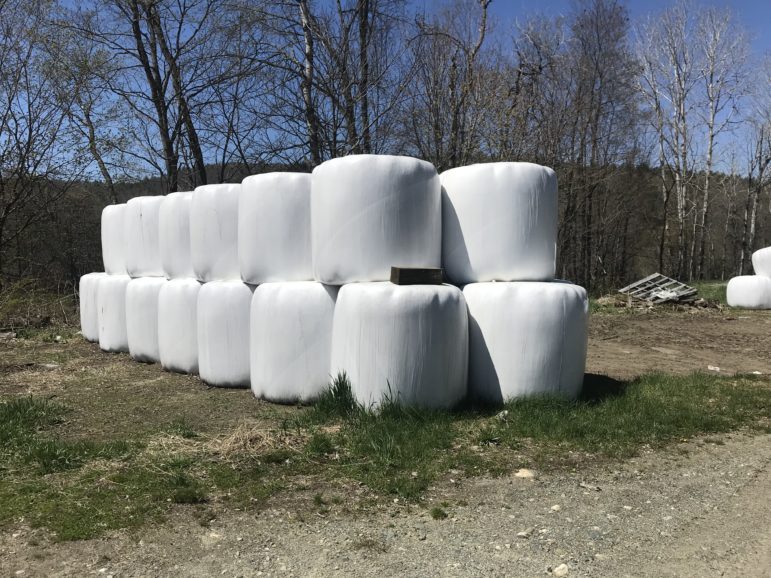
When I was young, we always bought baled hay and straw for our horses. When did it go to the wheel?
I think it’s a function of two or three different things. First, it’s harder and harder to get labor. Square bales are a lot of labor. You bale the hay out in the fields. It’s got to get from the field to the haymow. Then you take a truck and pick up all the bales and put them up on the truck, drive the truck to the barn, take and pull them onto a conveyor, to two or three guys up in dusty haymow, taking those bales and stacking them up. It’s a hell of a job. In the 1970s, kids would be knocking at the door and asking if they could work for me putting in bales. Teenage boys wanted to make some money. They don’t exist today. They’re going to soccer camp or going to the Cape. It’s different.
The other aspect is climate change. All the time I was growing up, you could rely on periods of warm sunny days in the summer where you could cure hay. You could mow it today. Tomorrow you could fluff it up. The third day you could rake it up and bale it. We don’t get that now. We get more cloudy weather. We get humidity. We get showers. So, it’s much harder. In the ’80s came this new technology of wrapping it. It was perfected in Scandinavia, where they had the same problem. It necessitated building equipment that was stronger to be able to take the weight and force necessary to grab that damper grass and compress it, pull it all together, and then put something to hold it together. We’d mow it, and it would be about 85-90% moisture, water. If we let it just sit for seven or eight hours, it will breathe out down to about 60%, and with this system, that’s when we can bale it then. But if we are going to make dry hay for your horse, we have to get it down to 25%. So, we need more days of sunshine. If we’re not getting it, it’s tough. This technology came in and evolved quite quickly. When you take that wet material and you bind it up with any oxygen getting into it, first of all, it will heat up. You hear about barn fires caused by wet hay. That’s what could happen. But with the same thing, you wrap that hay up in a tight bundle like a roll of toilet paper, and it will heat, but after it’s heated for a day or two, it will begin to mold. It will spoil, and the cows can’t eat it. We had to block that oxygen from getting in there and causing that fermentation. That’s why we wrap it up like Saran wrap; only it’s white. We put it on a machine that spins it around and puts that wrap on, and we pick it up and stack it up. It makes wonderful feed.
That you simply unwrap for the animals.
Oh yeah, take a jackknife and cut that plastic off, and then there’s a nylon fish line net that holds it together. You get that off, and you feed it out. You can fork it out or just push a bale up to a feed bunk, and the cows can take turns and chow on it.
Why is a Border Leicester a great sheep?
My father was a sheepman. He liked white face sheep. White faces tend to have small heads. They have easier lambing. They pass through the pelvic girdle easier. We had Montadale and Dorset sheep, and my father said we needed to get a little bit more size on them. That’s when we got the Border Leicester genetics to put that in there. They had bigger frames.
Milk prices. Is this what drives you out of business?
The pattern of the dairy industry is get it bigger or get out. Where we are, there is no room to get bigger. The boys are approaching their fifties; they just said we’ve done it, we’ve got the satisfaction, and we did a good job with it. They don’t have any offspring that want to farm. The bad milk prices for all the years we did it until 2014, the pattern of milk price was a sawtooth. The price would go up for a while, and you’d make money and catch up on your debt. And then, it would go back down. So, you have hard times for eighteen months or so, and then it would come back up. You just lived with that. But, in 2014, we had a record year; it went way up, and wow, it was something. But then it crashed and didn’t come back. In 2018, my wife and I just turned over the farm operation to the boys in 1995 or 1997. We still own the real estate, but it’s their farm to run. They make the decisions. By 2018, the boys said we’re not going to borrow money to keep this going. They sold the cows to Amish people from Pennsylvania.
PUBLIC SERVANT: A simple calculus: “Gallen wins, Steve Taylor will probably become the next agriculture commissioner; Sununu wins, Steve Taylor is likely toast.”
How many years were you Commissioner of Agriculture, and what does the job entail?
Twenty-five years. His charge is to promote and protect agriculture in all aspects.
There is quite a story about how you get the job in the first place.
Gallen was the governor. This job became vacant right after the election. Gallen lost, but he was the lame-duck from November till January. I had been proposed by the Agricultural Advisory Board for appointment, but Gallen didn’t do anything about it. I never had contact with him until after the election; one of his staff people called asking if I was still interested in that job. If you want to do it, we’ll put your name in nomination. Right after that, Gallen got sick and went into the hospital. I figured that’s the end of it. It was the weirdest time. I had to speak to the Executive Council.
Governor Hugh Gallen died on December 29, 1982.
He was in a hospital in Boston, and it became clear he wasn’t going to come home. On his deathbed, he called up the acting governor, a State Senator, president of the NH State Senate from down in Salem, Vesta Roy. He said, I’m not making it back, and I won’t last much longer. But, as a courtesy to me, would you bring up the four or five nominations he had made that were on the table and just bring them up for a vote. I’d appreciate it if you would. She said okay. That’s how it happened. The further dimension was I had two votes out of five, but the third one was I couldn’t get it nailed down. I knew two were against it. The third one, Dudley Dudley, she wanted a woman to get it.
I enlisted the help of my old friend, Paul McEachern. I said Paul, what the hell do I do? I couldn’t even get Dudley to return my phone calls. She froze me out. Finally, Paul intervened. He got Bill Dunfey to contact an old warhorse Democrat who called up Dudley and said you got to support this guy. In the end, she did. He told Dudley talk to this guy. Give him a chance. I did talk to Dudley Dudley, and even then, she was totally noncommittal. She wouldn’t say yes or no. After that, I thought she’s hopeless. When it came up for a vote, she did vote for me, and I made it through three to two.
What’s the best fair in New Hampshire?
You’re going to get me in big trouble. You have to break them down. The best big fair would be Deerfield. They’re in a class by themselves. They make a lot of money. They reinvest in their facilities. They’ve got a real good fair. For a midsize fair, I enjoy the most is Lancaster. It’s spread out over a big meadow surrounded by mountains, a beautiful spot. They do a good job and have a lot of things that are fun to look at. And the best small fair would be Cornish. It’s my local fair. It’s a small fair but very agricultural.
FAMILY MAN: Gretchen, “the glue that held all this together.”
Would you talk to me about your wife, Gretchen?
Gretchen grew up in Framingham, Mass. Her father was a banker in Boston. She did not come from any kind of agricultural background. But she was a woman who absolutely loved animals, baby animals especially. She was a pushover. She went to UNH and decided to come to New Hampshire because she had made a lot of friends in the summer when she came up here on vacation when she was growing up. We ended up getting married. I was working at newspapers. She was working in the bank in Manchester and then in Dover. She stayed with me through and through. When she died, we had been married forty-eight years. She had a lot of dimensions to her. She was a very private woman. She was not one to stand up in a meeting and run her mouth. She was very, very smart, and very well-read. She was a great mom.
I read a wonderful column in some paper about a guy who was losing his wife. He said the first four or five years after, you grieve. But then it becomes about the memories.
The boys and I were talking about her a couple weeks ago, and it’s so true. What we miss, how it was, how great it was. I’m sure we appreciated it at the time, but we appreciate it now much more.
You have three boys, Jim, Bill, and Rob. What do the boys do?
Jim is the head of public works for the town of Enfield. He’s in charge of the roads, the sewers, the water system, the solid wastes, and cemeteries. He has a crew of about twenty-five employees that report to him. He’s done that for quite a while. He’s very good at it and enjoys it.
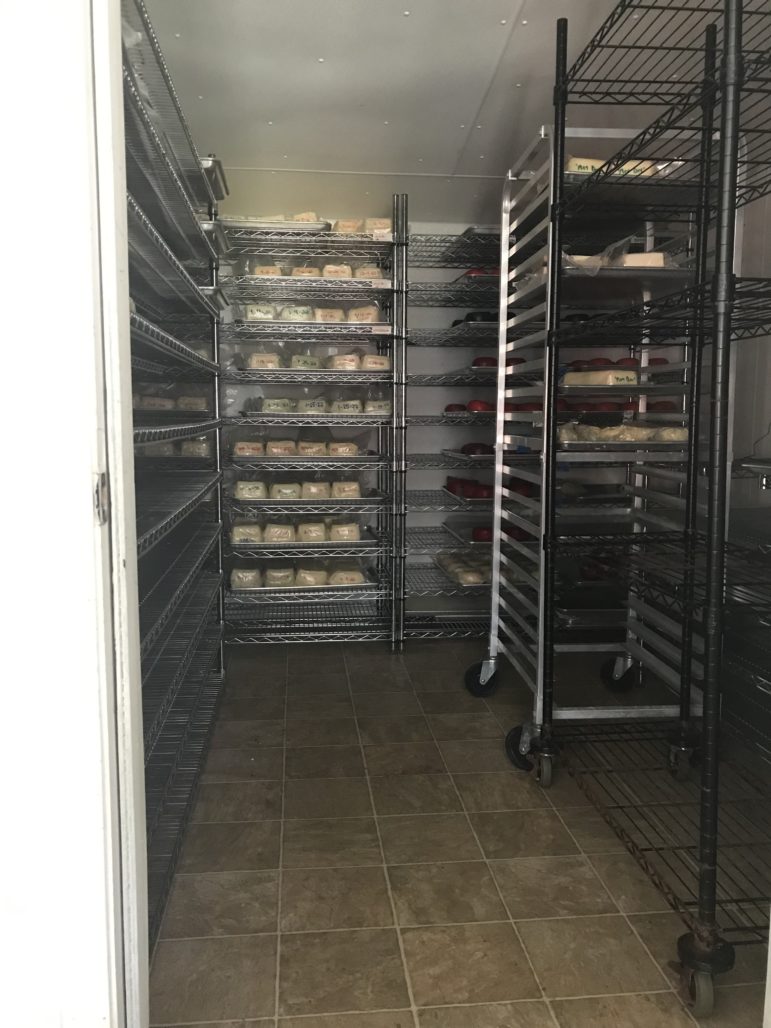
Bill and his wife own the Garfield Smokehouse across the street. They do ham, bacon; they’re federally inspected. But their big product is smoked cheese. The biggest part of the smoked cheese business are these little cubes they pack in an eight-ounce bag. You open the damn thing, eat one, and you can’t stop yourself. You’ll eat the whole thing. It’s delicious cheese. He runs the village water and sewer system, and he’s the town fire chief. He’s a genius with carpentry, plumbing, electric and mechanical. When he was eighteen months old, I could hold him in my lap, and he could steer the pickup truck down the road.
The youngest one is Rob. He managed the farm up to the end. He works for the town of Enfield, doing their planning, zoning, and land use regulations. They have Mascoma Lake, and big money is buying up cottages, knocking them down, and putting up mansions. Just like Winnipesaukee and Sunapee. Now it’s happening in Mascoma. Enfield is getting a lot of overflow from Hanover, Lebanon, which is growing very rapidly all because of that medical center. They’re building a new patient tower now. They need 2,000 more employees to staff this new patient tower. Where are they going to live? They’re building all kinds of apartments. I can’t believe how far people drive to work there for a good job and high pay. Right here, we’re getting hit. There isn’t much land to develop because the people who’ve got the land don’t want to sell it. I like my fifteen acres.
THE NEXT ADVENTURE: InDepthNH.org
How did you connect with Nancy West and InDepthNH.org?
Good question. She called me up one day, and she said can I have lunch with you. I said why not. I knew about her project vaguely. We met up over in New London at Tucker’s. She laid it all out what she was trying to do. I said this is a big project. She said I want to get you on my board. I asked why. You know the news business, and you know New Hampshire, and so I said okay. Another adventure.
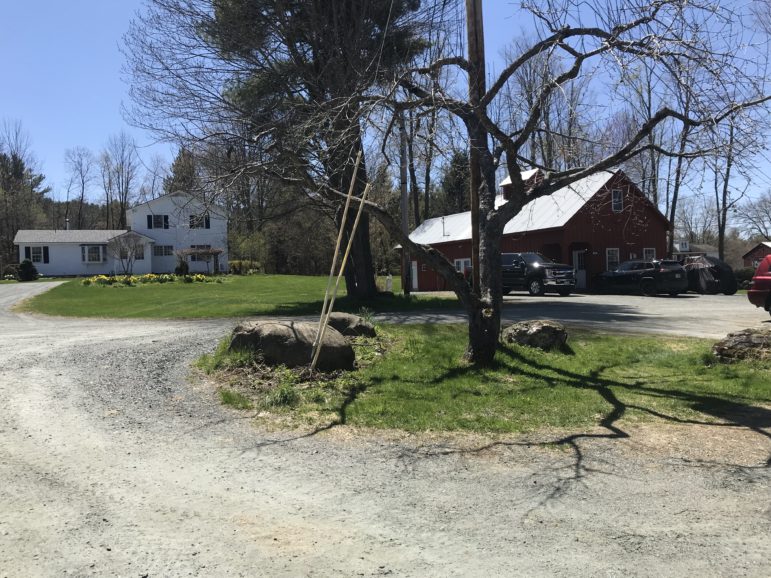
FINAL WORDS
To visit the farm brought back memories for me of growing up in Ohio. One striking memory of mine is the smell of manure as I got out of my car when I arrived at the farm. The smell of manure was nostalgic and not an unwanted aroma. As a woman from Ohio, where grain silos dot the landscape, cars sit on blocks in driveways, factory workers walk home with metal lunch containers in hand, and corn grows everywhere, I appreciated all Steve had to say. Just as I come from a farming area, Steve Taylor helped make his town of Plainfield a better place. One chapter is titled “Witnessing 80-Plus Years of Changes in Plainfield.” Steve is a living witness.
Editor’s note: Steve wrote the book for family and friends. If you want to buy a copy, you might have to ask him to print more copies at stevetaylornh@gmail.com.
